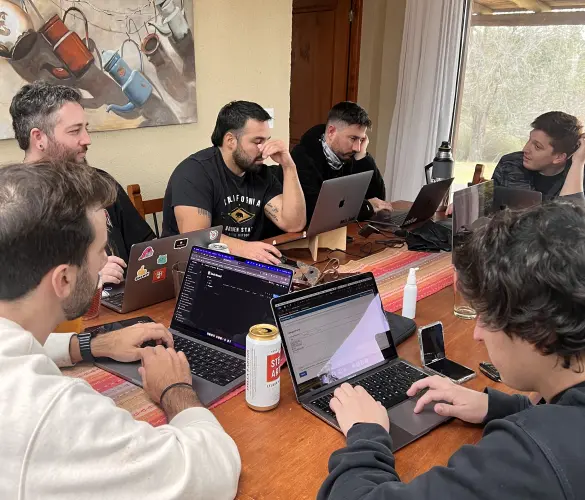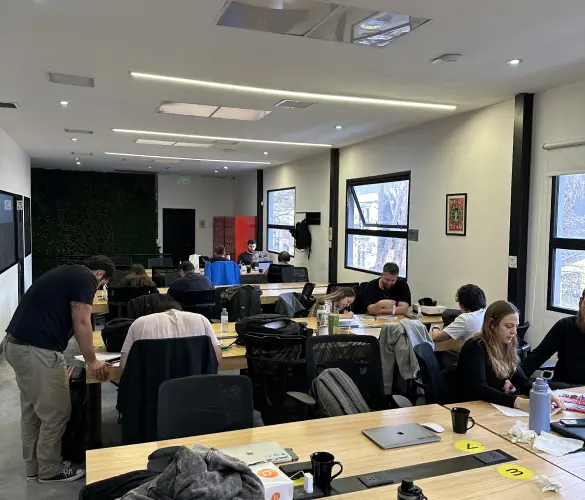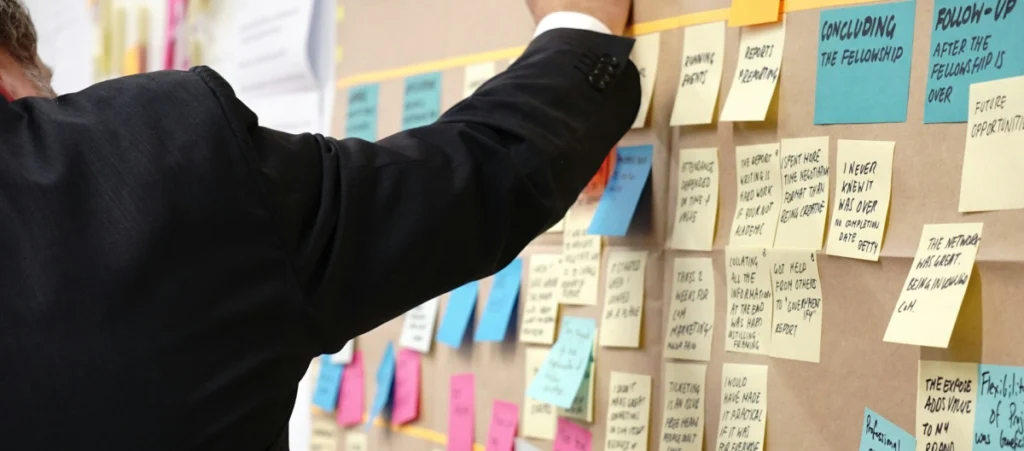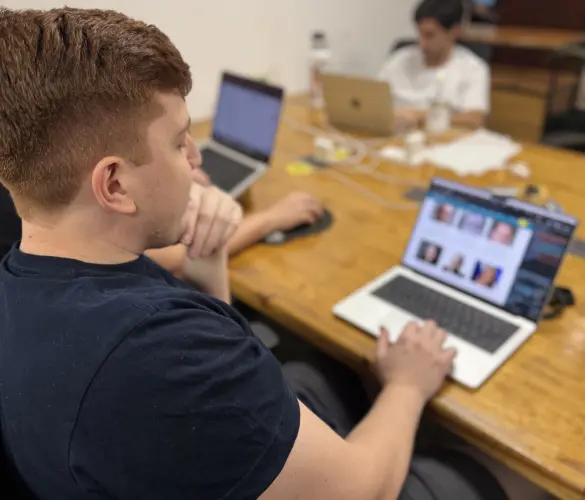As a digital agency that provides WordPress services, your job is to take on as many projects as possible while maintaining the highest quality.
This is easier said than done and requires many internal adjustments, but it will allow you to scale and attract more clients.
In this article, we will explore some strategies for taking on more projects while keeping the quality of each very high.
Key Takeaways
- The first step to taking on more projects is to secure the talent you need to maintain the high quality of your work.
- A possible strategy to take on more projects is to look for smaller projects you can finish in a month or so. The budget for each will be lower, but it will allow you to keep cash flowing and iterate over your processes, improving them in every project.
- Increasing the quality and efficiency of your project involves improving communication with clients to prevent unnecessary tasks due to misunderstandings, managing billed hours better, and making technical improvements that save you time.
7 Strategies to Take on More WordPress Projects
Strategy #1: Ensure You Have the Talent To Provide Quality Services
Every agency requires skilled team members to get projects done, so the first step in your journey toward more projects is to secure the talent pool you need.
Here are a few things to keep in mind to make it happen.
Identify Your Needs
Before scaling up your workload, you must identify the specific skills, roles, and resources necessary to maintain high-quality service.
The first step is analyzing your existing processes and identifying any bottlenecks. Examples include:
- Spending too much time coding features that could be a custom plugin.
- Communication with clients is taking more time than actual development.
There are many more, but the point is that identifying them and knowing where your time is going will help you pinpoint the expertise and support needed to streamline operations moving forward.
Based on this information, determine whether your team needs to grow by hiring more developers, designers, project managers, quality assurance analysts, or content creators.
If you do need new team members, then you need to create a hiring strategy. Will you hire in-house? Will you work with freelancers on a project-by-project basis? Do you need to partner with an agency long-term?
Answer all these questions based on your needs.
Assess Expertise and Experience
Once you’ve decided on hiring, the first step is to ensure they are a good fit in terms of technical skills. This is the part where your specific niche comes into play, but in most cases, you’ll want a WordPress developer that has:
- Deep knowledge in HTML, CSS, JavaScript, and PHP.
- Multiple years of WordPress experience.
- Mid or advanced knowledge in Git.
- Knowledge in React, SCSS, and BEM.
- Optionally, knowledge in UX/UI, GraphQL, unit testing, design patterns, and Docker containers.
- If you are an agency from a non-English-speaking country, an intermediate level of English, like B1 level or higher, is appreciated and sometimes necessary.
Also, remember that your specific goals and techniques may dictate who you hire or whether you need to train them.
For example, we’ve been focusing on the Site Editor feature and custom Gutenberg blocks for the past few years. Not all developers are familiar with these tools and development techniques, so keep that in mind when hiring and building training programs.
But always remember that there is room for growth in every dedicated team member who wants to give it an honest shot.
Recently, one of our developers transitioned from soloing most projects and scarcely using Git in previous positions to effectively integrating into our highly structured workflow.
It shows that team members can adapt to the agency’s technical requirements with enough effort and support.
Assess Soft Skills
It may seem strange initially, but soft skills are one of the most important factors separating great developers from average ones.
While it can be hard to determine a candidate’s soft skills via interviews, here are a few ways to identify someone’s soft skills:
- Ask them to explain a technical concept in simple terms. A good communicator can make complex ideas understandable for those without tech skills.
- Ask them what they like the most about being a developer.
- Ask them if they tend to work alone or in a team and what their experiences have been when working with others.
- Evaluate their written communication by reviewing their emails, instant messages, etc.
- Ask them how they would explain delays or project issues to a non-technical client.
- Ask about a past difficult project and how they overcame roadblocks.
- Give them a hypothetical challenge (e.g., a slow-loading website) and ask how they would diagnose and resolve it.
- Ask how they stay updated with WordPress trends.
- Discuss how they handled a sudden change in a past project, like a scope change or a new requirement.
These questions can help you determine whether the candidate has the soft skills to be a good match for your team.
Strategy #2: Take on Smaller Projects
Once you’ve established that you have enough skilled team members to take on more projects, one of the strategies you could follow is accepting a higher number of smaller projects.
Fewer big projects can indeed be lucrative, but smaller projects in larger quantities can also be valuable. Taking on smaller projects could have the following benefits:
- Maintaining a steady cash flow.
- Giving you the opportunity to iterate over your processes in quick succession.
- Building a larger network by connecting with more partners in the same period as a large project would take.
- Keeping workloads manageable.
- Diversifying your range of services in highly specific, small-scale projects.
- Providing a lower-risk opportunity to test new approaches and give team members opportunities to adapt to them.
Essentially, smaller projects allow you the opportunity to get straight to the point with endeavors that are not that complicated and require fewer revisions. Fewer revisions mean a higher chance of your hourly rate staying as agreed with your client rather than diminishing due to extra unexpected tasks.
The most significant challenge that comes with smaller projects is that they involve smaller budgets. This is a factor you must consider and balance over time to see if these more numerous, smaller projects are indeed worth it for your team.
Strategy #3: Improve Communication With Your Clients
Redundant communication is one of the most common ways projects lose track of the goal and extend for longer than necessary.
In our experience, progress updates and tickets are some of the most common sources of miscommunication and redundant communications.
Tickets
Let’s start with tickets. Usually, we have 2 types of tickets:
- “Normal” or “regular” tickets. The client makes a request. In response, we estimate the necessary hours to make it possible and send the quote to the client for approval.
- “Special” tickets. These tickets involve complex requirements where the number of hours is not as straightforward to estimate, so we first request approval for research. Based on the result of our research, we request approval for the necessary hours to fulfill the request.
The key is to be extremely honest about these with clients so that they are aware of unexpected costs when tasks are more complicated than expected.
Be clear with them. Send them documentation that explains how the commercial relationship works, including tickets, as they are one of the most common ways to interact with clients. In these documents, specify:
- How to send tickets.
- What your everyday workflow and schedules look like.
- How long you usually take to acknowledge and start working on tickets.
- How to contact you during emergencies.
Being honest and straightforward will foster trust with your clients and save you lots of time.
Progress Updates
Progress updates are another big source of miscommunication because they are so common. We solved the problem of spending too much time sending progress updates with a client dashboard.
It is a set of documents and interactive data points that we host on Notion. It allows clients to always know where the project is in terms of progress.
Some of the elements included in the client dashboard are:
- A list of tasks our team needs to complete as part of a sprint and the timeline for each. Each task is updated regularly so the client can see what’s in progress and what’s next. Examples of tasks include creating the sitemap, developing custom blocks, migrating the site, and more.
- Which pages are ready for the client to start creating content and which are still in progress.
- A list of actions the client must complete for the project to keep going smoothly. These tasks include providing necessary content, approving certain project milestones, replying to technical queries, etc.
- Quick links. This section gives clients quick access to key project resources that they may need to refer to frequently. This section includes links to documentation, Figma designs, and more.
- A log of client meetings, with a summary of what was discussed in each.
- A section where the client can leave feedback in real time.
- WordPress 101. A section with a collection of helpful resources that make navigating and using the WordPress backend easier. Customers can access tutorials, guides, and videos covering what they need to know to use WordPress effectively.
Using a client dashboard has been invaluable in saving us time. It is a one-stop shop with everything the client needs to keep up with progress. Essentially, it streamlines communication and prevents unnecessary back-and-forths and meetings.
Strategy #4: Manage Hours Appropriately
Poorly managed billed hours are another big source of inefficiencies that prevent you from getting projects done and moving on to the next one.
One of the main problems here is what we mentioned in the section about tickets: some WordPress development or maintenance tasks are straightforward and don’t require preliminary research.
However, others are more complex and require preliminary research to determine the possible issues and solutions and how long they would take to perform.
As mentioned earlier, the key here is communication. Be clear with clients about the complexity of each task. Develop a method to anticipate how many hours tasks take and transparently communicate the associated costs to your clients.
Additionally, get in the habit of asking for approval on billed research hours for complicated tasks. Then, get approval for the estimated hours needed to complete the task.
Focus on:
- Why the task is complex.
- What actions you’ll take during the research phase.
- What you expected to learn from the investigation.
- Whether a definitive solution is likely to be identified within those initial hours.
Additionally, your team should hold an internal retrospective meeting at the end of every project. This meeting should allow your team to reflect on what went well, identify areas for improvement, gather feedback from team members, and create actionable steps based on this information.
The goal is to avoid the miscommunication problems that may result in non-billable hours being used for tasks that clients haven’t explicitly approved, as it ultimately affects both your agency’s profitability and the client’s perception of value.
Strategy #5: Limit How Many Revisions You Make During Projects
Revising your work is a part of WordPress projects. Either because a developer left a bug, a designer didn’t align elements as expected, the client misunderstood the scope of a task and now wants a do-over, or anything else, there will be a need for some revisions.
However, too many revisions can reduce the profitability of your projects. One of the biggest keys to avoiding this is good communication (again).
Be clear about the scope of your tasks and project as a whole. Do so in writing in the contract you sign with your client and stick to the terms of the contract.
This way, if the client wants to revise and modify a feature that you developed as stated in the contract, you can tell them that it would require a new agreement for this specific revision.
However, you also need to hold yourself accountable if you do something differently than the client agreed to. In that case, you’ll need to redo the job without additional billed hours, such as when the client discovers a bug within the post-project warranty window.
This reduces profitability and highlights why clear terms for revisions are necessary.
Two strategies to consider here are limiting revisions and slightly increasing your fees to cover any unpaid hours. Above all, ensure you and your client are aligned about what each task does so there’ll be little need for revisions.
Strategy #6: Make Technical Improvements That Reduce Errors and Time Spent Fixing Them
This is highly specific to your agency and the methods you use. For example, if you focus on building sites with no-code plugins like Elementor, your adjustments will be different from those of an agency that uses the Site Editor feature and custom code.
Here are 2 improvements we’ve made recently that have greatly improved our ability to finish projects and move on to the next:
- Developing linters that execute automatically on our continuous integration/continuous delivery (CI/CD) pipelines to improve the quality of our code.
- Automating Composer and npm commands to solve some of the issues found by linters.
These measures prevent, for example, web pages from going down because a variable is being called but is not properly defined, forcing devs to spend time fixing a preventable problem.
The specific measures you take are highly dependent on your workflow.
Strategy #7: Outsource WordPress Development Tasks to an External Agency
Finally, if the core service provided by your agency is not web development, you may find that outsourcing your WordPress-related tasks is the most viable option for you.
By outsourcing your WordPress projects, you hand the technical tasks to a team of experienced designers, QA analysts, project managers, and developers who know how to get projects done.
This saves all the time and resources needed to set up an in-house team that you won’t really put to use most of the year. Over time, it’ll allow you to tackle more projects.
Start Taking on More WordPress Projects
Taking on more projects and scaling your agency is important to growing it and increasing revenue, but it’s not a simple process. It takes a serious effort to secure talent and make all processes more efficient.
Hopefully, with the strategies explored here, you can do just that moving forward.
And if you’re looking for a WordPress partner, we’re here for you! Over the past decade, we’ve built hundreds of WordPress sites and collaborated with top global agencies and individual clients, resulting in a Clutch review score of 4.9 out of 5.
Don’t settle for a one-size-fits-all solution. Contact us today for a free consultation, and let’s talk about how we can take your projects to the next level.
You can also read our blog and developer resources for more WordPress insights!
Related Articles

Business / 9 min read
Business / 9 min read
How to Choose a WordPress Development Agency to Scale Your Projects?
When your agency starts to scale, you may decide that a big part of your expansion will be providing WordPress services. If that's the case but you don't have an…
Read More
Business / 7 min read
Business / 7 min read
How to Optimize Time and Resources in WordPress Projects
WordPress agencies need to optimize and human resources use in order for their services (development, QA, design, etc.) to be profitable. They need to plan these projects very thoroughly to…
Read More
Business / 11 min read
Business / 11 min read
How WordPress Outsourcing Can Help Scale Your Agency
WordPress development outsourcing is becoming more frequent and affordable every day, helping global digital agencies of all sizes scale their services without the long-term investment of hiring an in-house team.…
Read More
Business / 8 min read
Business / 8 min read
What Is a White Label WordPress Development Agency?
A white label WordPress development agency is a company of WordPress developers, QA analysts, and project managers who provide outsourced services to digital agencies that lack a development team. Importantly,…
Read More
Behind the Canvas / 10 min read
Behind the Canvas / 10 min read
14 Common Client Doubts and Questions in WordPress Development Projects
After building hundreds of WordPress sites over years of experience, we’ve heard pretty much every common doubt, question, and concern a client can have about their site. In this article,…
Read More
